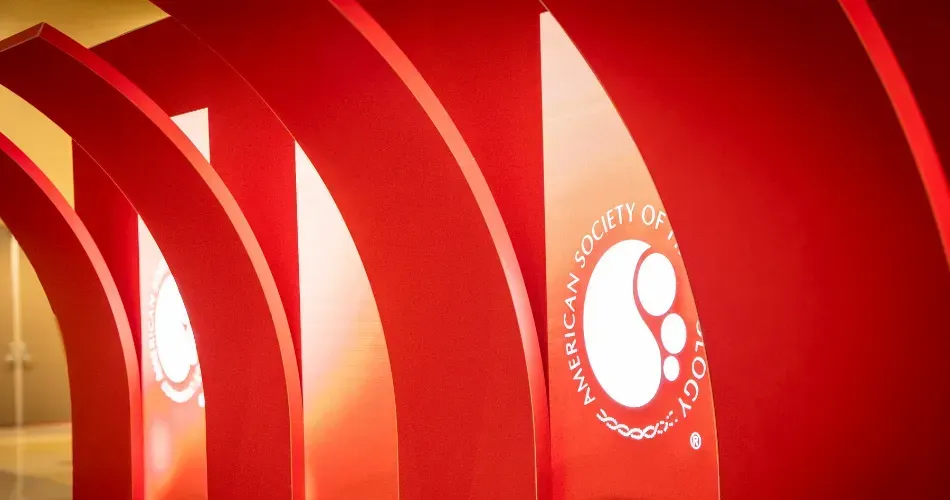What Is Polycythemia Vera (PV)?
Is Polycythemia Vera a Cancer?
Polycythemia vera (often referred to as PV for short) is a rare blood cancer that causes the bone marrow to make too many blood cells, specifically red blood cells. The excess cells make the blood thicker and can cause issues with circulation, blood clots, or excessive bleeding. Click here to learn more about PV symptoms.
There is not yet a cure for PV. Certain medicines are recommended to help manage PV over time to prevent serious complications and manage side effects. The cancer is often slow-growing and, with treatment, may be managed for long periods of time. For some people, PV may progress quickly into other blood cancers like myelofibrosis.
Treatments for PV depend on your risk level. Low-risk PV refers to you being under the age of 60 and not having experienced a blood clot. High-risk PV is when you have experienced a blood clot and/or are over the age of 60. Click here to learn about PV treatments.
You may also hear about PV being referred to as a type of myeloproliferative neoplasm (MPN). This simply means it’s a condition that causes the abnormal growth of cells in the bone marrow.
What Causes Polycythemia Vera (PV)?
PV is not a condition you inherit from your parents. It is something you develop during your life. In PV, the JAK2 gene of your stem cells (cells capable of specializing into other types like red blood cells) has a mutation. Genes are instructions that tell your cells how to work. When they are altered, the cells do not work properly. In the case of the JAK2 mutation seen in PV, it causes the red blood cells not to die when they should, allowing them to continue multiplying and crowding out other blood cells over time.
Certain studies have shown that chronic MPNs like polycythemia vera (PV) are caused by chronic inflammation and oxidative stress. Long-lasting inflammation may drive PV to progress into myelofibrosis. Stem cells altered by chronic inflammation cause the clone to produce inflammatory molecules in the bone marrow, further causing the mutated clone (cancer cell) to replicate and expand.
Driver mutations have demonstrated inflammatory-related genes provoking the development of an inflammatory state. Strategies to reduce inflammation, like methods that control the production of inflammatory molecules called cytokines and oxidative stress (decreasing excess harmful molecules called free radicals with antioxidants), may support these patients to improve their condition and stop the progression of PV into worse forms of blood cancer like myelofibrosis.
Who is at Risk for Polycythemia Vera?
Approximately 22 out of every 100,000 people are diagnosed with PV. Listed below are some of the risk factors for developing PV:
- People over the age of 60 are more likely to develop PV, although it can develop at any age.
- Exposure to intense radiation or toxic substances can increase your risk of developing or worsening PV.
- Men are slightly more affected by PV than women.
- PV is more common among Jews of Eastern European descent than other Europeans or Asians.
Stay Updated on the Latest Polycythemia Vera News
Are you interested in learning more about polycythemia vera? Click on the button below to read PV news articles.
Sources:
Is Polycythemia Vera a Cancer?
Polycythemia vera (often referred to as PV for short) is a rare blood cancer that causes the bone marrow to make too many blood cells, specifically red blood cells. The excess cells make the blood thicker and can cause issues with circulation, blood clots, or excessive bleeding. Click here to learn more about PV symptoms.
There is not yet a cure for PV. Certain medicines are recommended to help manage PV over time to prevent serious complications and manage side effects. The cancer is often slow-growing and, with treatment, may be managed for long periods of time. For some people, PV may progress quickly into other blood cancers like myelofibrosis.
Treatments for PV depend on your risk level. Low-risk PV refers to you being under the age of 60 and not having experienced a blood clot. High-risk PV is when you have experienced a blood clot and/or are over the age of 60. Click here to learn about PV treatments.
You may also hear about PV being referred to as a type of myeloproliferative neoplasm (MPN). This simply means it’s a condition that causes the abnormal growth of cells in the bone marrow.
What Causes Polycythemia Vera (PV)?
PV is not a condition you inherit from your parents. It is something you develop during your life. In PV, the JAK2 gene of your stem cells (cells capable of specializing into other types like red blood cells) has a mutation. Genes are instructions that tell your cells how to work. When they are altered, the cells do not work properly. In the case of the JAK2 mutation seen in PV, it causes the red blood cells not to die when they should, allowing them to continue multiplying and crowding out other blood cells over time.
Certain studies have shown that chronic MPNs like polycythemia vera (PV) are caused by chronic inflammation and oxidative stress. Long-lasting inflammation may drive PV to progress into myelofibrosis. Stem cells altered by chronic inflammation cause the clone to produce inflammatory molecules in the bone marrow, further causing the mutated clone (cancer cell) to replicate and expand.
Driver mutations have demonstrated inflammatory-related genes provoking the development of an inflammatory state. Strategies to reduce inflammation, like methods that control the production of inflammatory molecules called cytokines and oxidative stress (decreasing excess harmful molecules called free radicals with antioxidants), may support these patients to improve their condition and stop the progression of PV into worse forms of blood cancer like myelofibrosis.
Who is at Risk for Polycythemia Vera?
Approximately 22 out of every 100,000 people are diagnosed with PV. Listed below are some of the risk factors for developing PV:
- People over the age of 60 are more likely to develop PV, although it can develop at any age.
- Exposure to intense radiation or toxic substances can increase your risk of developing or worsening PV.
- Men are slightly more affected by PV than women.
- PV is more common among Jews of Eastern European descent than other Europeans or Asians.
Stay Updated on the Latest Polycythemia Vera News
Are you interested in learning more about polycythemia vera? Click on the button below to read PV news articles.
Sources:
Trending Articles
Get the Latest Polycythemia Vera Updates, Delivered to You.
By subscribing to the HealthTree newsletter, you'll receive the latest research, treatment updates, and expert insights to help you navigate your health.
Together we care.
Together we cure.
3x Faster.




